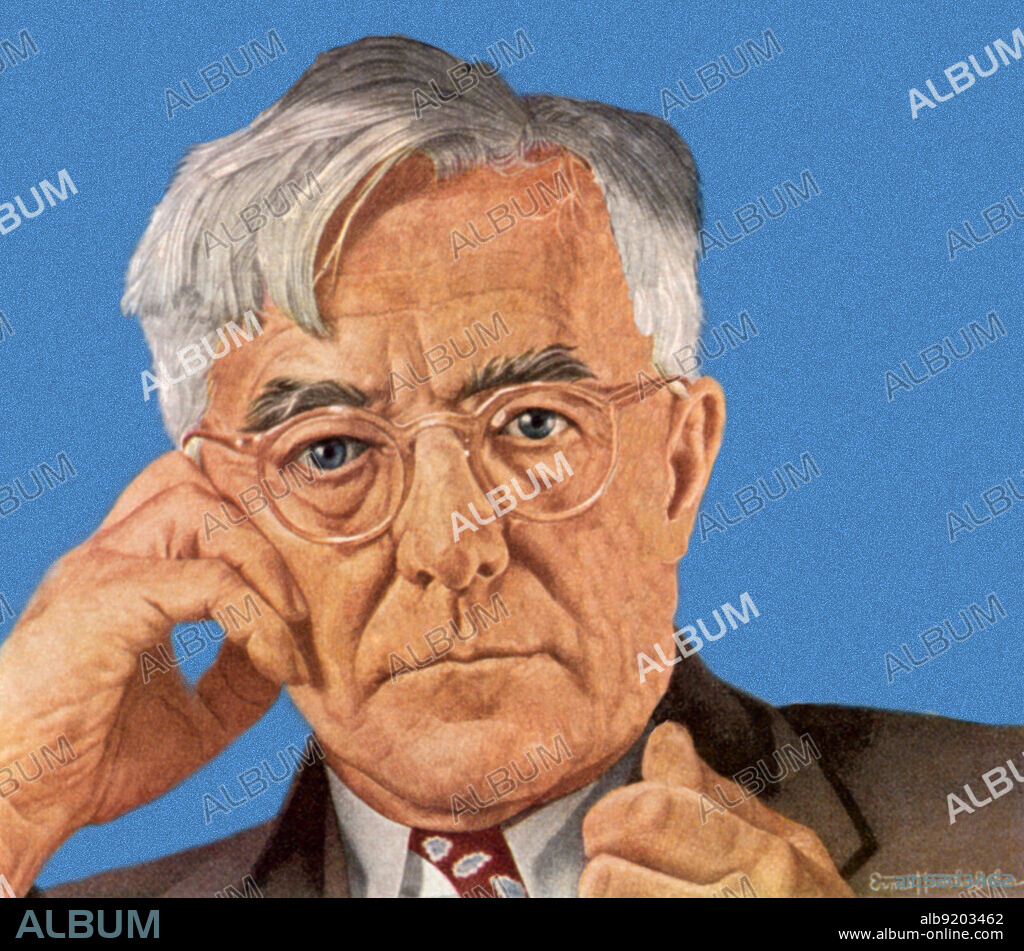alb9203462
Irving Langmuir, American Chemist

|
Add to another lightbox |
|
Add to another lightbox |



Buy this image.
Select the use:

Title:
Irving Langmuir, American Chemist
Caption:
Irving Langmuir in a portrait that appeared on the cover of Time magazine in 1950. The tagline was: "Can man learn to control the atmosphere he lives in?" Irving Langmuir ( January 31, 1881 - August 16, 1957) was an American chemist and physicist. His initial contributions to science came from his study of light bulbs. His first major development was the improvement of the diffusion pump, which ultimately led to the invention of the high-vacuum tube. A year later, he and colleague Lewi Tonks discovered that the lifetime of a tungsten filament was greatly lengthened by filling the bulb with an inert gas, such as argon. He also discovered that twisting the filament into a tight coil improved its efficiency. These were important developments in the history of the incandescent light bulb. He introduced the concept of electron temperature and in 1924 invented the diagnostic method for measuring both temperature and density with an electrostatic probe, now called a Langmuir probe and commonly used in plasma physics.Following World War I Langmuir contributed to atomic theory and the understanding of atomic structure by defining the modern concept of valence shells and isotopes. He was awarded the 1932 Nobel Prize in Chemistry for his work in surface chemistry. He was the first industrial chemist to become a Nobel laureate. During World War II, Langmuir worked on improving naval sonar for submarine detection, and later to develop protective smoke screens and methods for deicing aircraft wings. He died from a heart attack in 1957 at the age of 76. His obituary ran on the front page of The New York Times.
Credit:
Album / New York Public Library / Science Source
Releases:
Image size:
3312 x 2904 px | 27.5 MB
Print size:
28.0 x 24.6 cm | 11.0 x 9.7 in (300 dpi)
Keywords:
1881 • 1932 • 1957 • 20 20TH XX XXTH TWENTIETH CENTURY • 20 XX TWENTIETH CENTURY • 20TH CENTURY • 20TH • AMERICA • AMERICAN • ART • BP0042 • BULB • CELEBRITIES • CELEBRITY • CENTURY • CHEMIST • CHEMISTRY • COVER • FAMOUS PEOPLE • FAMOUS • HIGH-VACUUM • HISTORIC • HISTORY • I • ILLUSTRATION • ILLUSTRATIONS • ILUSTRATION • INVENTOR (MALE) • INVENTOR • IRVING • LANGMUIR • LIGHT • MAGAZINE • MAN • MEN • NOBEL PRIZE LAUREATE • NOBEL PRIZE • NOBEL • PERSON • PERSONALITY • PHYSICIST • PORTAIT • PORTRAIT • POTRAIT • PRIZE • PROTECTIVE • SAVANT • SCIENTIFIC • SCIENTIST • SCREENS • SMOKE • SURFACE • TIME • TUBE • TWENTIETH CENTURY • USA


 Pinterest
Pinterest Twitter
Twitter Facebook
Facebook Copy link
Copy link Email
Email
